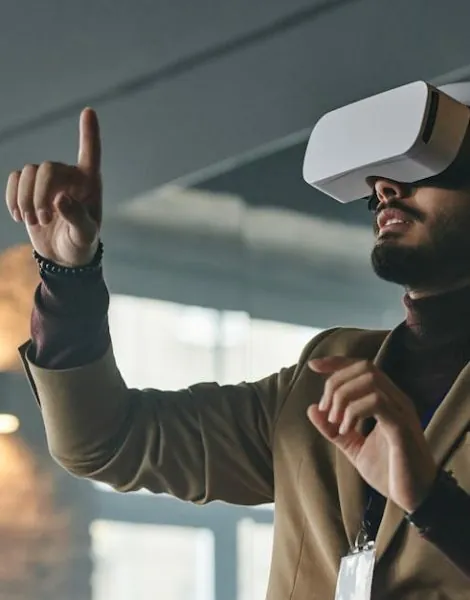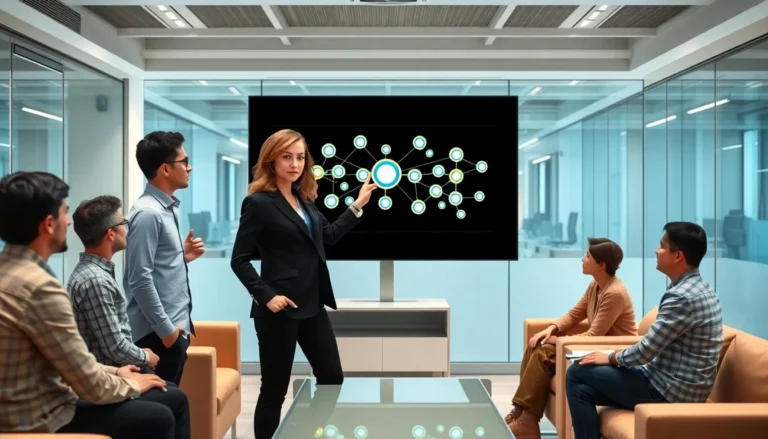In a world where science experiments often involve more mess than magic, virtual lab simulations are like a superhero swooping in to save the day. Gone are the days of dodging flying beakers and questionable chemical reactions. Now, students can dive into immersive environments that bring complex concepts to life, all while keeping their lab coats spotless.
Table of Contents
ToggleOverview of Virtual Lab Simulations
Virtual lab simulations transform traditional science education by offering realistic digital environments for experimentation. These simulations replicate lab settings, enabling students to conduct experiments that may be unsafe or impractical in real life. Engaging graphics and interactive elements enhance student understanding, making abstract concepts tangible.
Students can manipulate variables and observe outcomes in real-time, mirroring actual scientific processes. Instructors can assign various scenarios, allowing learners to practice problem-solving and critical thinking skills. Such adaptability caters to diverse learning styles, fostering an inclusive educational atmosphere.
Time efficiency stands out as another benefit of virtual labs. Students access simulations anytime, accommodating their schedules. This flexibility also allows repeated practice, reinforcing knowledge retention.
Data collection during simulations provides valuable insights into student progress. Educators can assess performance through analytics, identifying areas for improvement efficiently. Customizable assessments deliver targeted feedback, enhancing the learning experience.
Costs associated with traditional labs, such as equipment and materials, significantly decrease with virtual alternatives. Schools can allocate funds more effectively, investing in technology that benefits student learning. Moreover, virtual simulations expand access to resources that might otherwise be limited, leveling the educational playing field.
By integrating virtual lab simulations into curricula, educators enhance engagement and comprehension. Traditional barriers dissolve, granting students the opportunity to explore scientific frontiers without the constraints of physical lab environments. These simulations represent an innovative approach, seamlessly merging technology with education to prepare students for future scientific endeavors.
Benefits of Virtual Lab Simulations
Virtual lab simulations offer numerous advantages in science education. They enhance student learning experiences while making complex topics more accessible and engaging.
Accessibility and Convenience
Accessibility marks a critical aspect of virtual lab simulations. Students can access simulations anytime, breaking the barriers of physical lab scheduling. These platforms support diverse learning styles, catering to visual and experiential learners. Convenience allows for repeated practice, which strengthens understanding and retention. Schools can also integrate these simulations into existing curricula without extensive infrastructure changes. Additionally, students who may face challenges in traditional lab settings find equal opportunities to explore scientific concepts, ensuring inclusivity.
Cost-Effectiveness
Cost-effectiveness represents another significant benefit of virtual lab simulations. Traditional lab operations require substantial funds for equipment, materials, and maintenance. Virtual labs eliminate many of these ongoing expenses, freeing up resources for other educational purposes. Schools experience reduced costs while maintaining high-quality educational standards. By decreasing the financial barriers associated with hands-on experiments, more institutions can adopt advanced technology. Budget-friendly solutions foster broader access to educational resources, enabling students everywhere to pursue scientific inquiry without the limitations of physical lab facilities.
Types of Virtual Lab Simulations
Virtual lab simulations come in various forms, catering to different disciplines within the scientific and engineering fields. These simulations offer unique experiences that enhance learning outcomes by creating effective alternatives to traditional lab work.
Science and Chemistry Simulations
Science and chemistry simulations allow students to conduct experiments in a safe, controlled environment. Users can explore chemical reactions, observe molecular interactions, and manipulate elements without physical risks. Simulations often include intuitive interfaces that enable learners to test hypotheses regarding chemical properties. Engaging visuals and audio feedback enhance the understanding of complex concepts. Many platforms offer realistic scenarios that help students grasp the principles of stoichiometry or acid-base reactions, significantly improving retention.
Engineering and Physics Simulations
Engineering and physics simulations provide hands-on learning experiences that emphasize problem-solving and critical thinking. Students can build structures, analyze forces, or explore energy transformations within virtual environments. Features like interactive tools facilitate the testing of different designs under various conditions. Integrating real-world applications, these simulations encourage learners to experiment with actual engineering concepts, such as Newton’s laws of motion or circuit designs. The immediate feedback generated during simulations aids in understanding fundamental principles.
Challenges and Limitations
Despite the benefits of virtual lab simulations, several challenges and limitations exist. Access to technology influences students’ ability to engage fully with simulations. Students without reliable internet connections or appropriate devices may face barriers that inhibit their learning experience.
Technical issues can disrupt the flow of virtual labs. Software glitches or hardware malfunctions may hinder students from completing their tasks, leading to frustration and reduced learning retention. Educators then need to be prepared to manage these interruptions effectively.
User experience varies among different simulations, which can lead to confusion. Simulations that lack intuitive designs may overwhelm students rather than support their learning. As a result, educators should select platforms with user-friendly interfaces and clear instructions to facilitate understanding.
Limited real-world practice poses another challenge. While virtual simulations emulate lab environments, they cannot replicate every aspect of physical experiments. Students miss out on essential hands-on skills that are critical in scientific education and professional practice.
Additionally, assessment methods can be problematic. Educators often struggle to evaluate student performance accurately during virtual simulations. Instructors may need to develop new assessment strategies tailored specifically to the unique nature of virtual learning environments.
Moreover, reliance on simulations can create issues with motivation. Some students may prefer traditional hands-on experiences and find virtual formats less engaging. Keeping students invested in their learning requires continuous improvement and interaction within simulations.
Effectively addressing these challenges enhances the overall effectiveness and adoption of virtual lab simulations in education. Educators and institutions must collaboratively develop strategies to tackle these issues head-on, ensuring that technology complements rather than replaces traditional learning.
Future Trends in Virtual Lab Simulations
Emerging technologies are set to revolutionize virtual lab simulations in education. Artificial intelligence enhances personalization, adapting learning experiences to individual student needs. Advanced analytics will provide deeper insights into student performance, enabling targeted interventions.
Augmented reality (AR) offers immersive experiences that blend virtual elements with the real world. These tools enrich student engagement by simulating laboratory environments that align closely with physical labs. Real-time collaboration features facilitate remote partnerships, allowing students from diverse locations to work together on experiments.
Integration with learning management systems streamlines assignment tracking and progress monitoring. This connectivity helps educators manage data efficiently while assessing student engagement and performance. Additionally, cloud-based solutions improve accessibility, ensuring that students can participate anytime, anywhere, without dependency on local resources.
Gamification strategies will emerge, turning simulations into interactive learning games that motivate students. Immediate feedback mechanisms support skill development, fostering a competitive yet supportive learning environment.
Increased focus on interdisciplinary approaches will blur the lines between subjects, enabling students to explore complex scientific concepts collaboratively. Simulations will incorporate real-world problems, encouraging critical thinking and problem-solving.
Finally, ongoing research into the efficacy of virtual labs will drive continuous improvements. Educators will adapt their curricula based on findings, ensuring that virtual labs meet educational standards while preparing students for future scientific challenges.
These trends signal an exciting phase for virtual lab simulations, promising a future where technology significantly enhances science education.
Virtual lab simulations are revolutionizing science education by offering an engaging and safe alternative to traditional experiments. They enhance student learning through immersive experiences that foster a deeper understanding of complex concepts. As technology continues to evolve, these simulations will become even more effective and accessible.
The integration of emerging technologies like AI and AR promises to further personalize and enrich the learning experience. By addressing existing challenges and embracing innovative solutions, educators can ensure that virtual labs complement traditional methods. This approach not only prepares students for future scientific endeavors but also cultivates critical thinking and problem-solving skills essential for success in an increasingly complex world.









